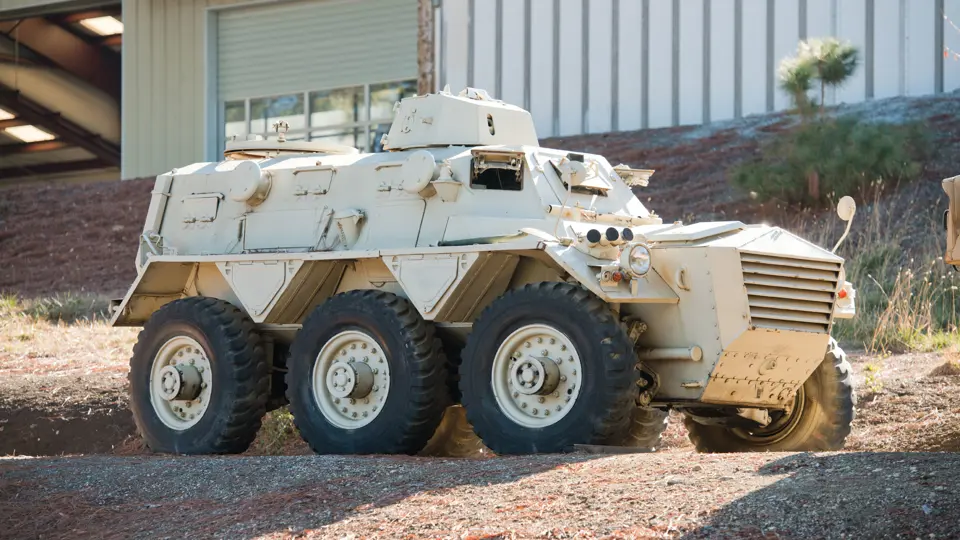 | Portola Valley, California
| Portola Valley, California
Weight: 11.2-tons (10,170-kg)
Length: 17' 1” (5.23-m)
Width: 8' 3” (2.54-m)
Height: 8' 1” (2.46-m)
Crew: 2 + 10 infantrymen
Armor:
.3” (8-mm) to .6” (16-mm) welded steel
Weapons:
-Primary
1x 7.62-mm L3A3 light machine gun in turret
1x 7.62-mm Bren Gun on hull rear ring-mount
Ammunition
3,000x 7.62-mm
Engine: Rolls-Royce B80 Mk 6A gasoline, 160-hp
Power/weight: 14.2-hp/ton
Fuel Capacity: 52-USG (200-l)
Range: 250-miles (402-km)
Speed: 45-mph (72-km/h)
The vehicle offered, FV603 Saracen APC, is an unrestored vehicle. It is painted white and it is not known if this is an original color. The tires are serviceable. Lights, mirrors and smoke grenade launchers are present. The anti-aircraft machine gun ring-mount is present. The crew seats are present and serviceable. The driver's controls are serviceable. It runs and drives very well. The interior looks good and may need only a minor cosmetic restoration.
The FV603 Saracen APC was the lead vehicle of the Saracen family of 6x6 armored personnel carriers. The Saracen was the first British post-World War II family of light armored vehicles. First going into production in 1952, the Saracen family includes three different APC's, a command post version, an artillery command vehicle and an ambulance version.
The standard APC was a 6x6 built by Alvis. It had a front-mounted engine with the superstructure rising up from the hull between the first and second wheel stations. The driver sat in the front center of the superstructure. A small machine gun turret was mounted near the front of the armored superstructure. One APC version did not mount a turret. A hatch in the rear of the superstructure allowed for a ring-mounted machine gun to be used. Two large doors at the rear of the superstructure allowed entry and egress for Saracen's infantry passengers.
The Saracen saw service in various conflicts during the 20th century including the Aden and Malayan Emergencies, Lebanese civil war and in Northern Ireland where it was often seen with wire screens mounted in order to defeat RPG-type weapons. For riot control, the machine guns were usually replaced with water cannon or other non-lethal type equipment. Saracens were purchased and used by at least 15 different countries including Australia, Brunei, Indonesia and Kuwait. Most have been retired from active service.
Transport Cost to Storage: $1,320





